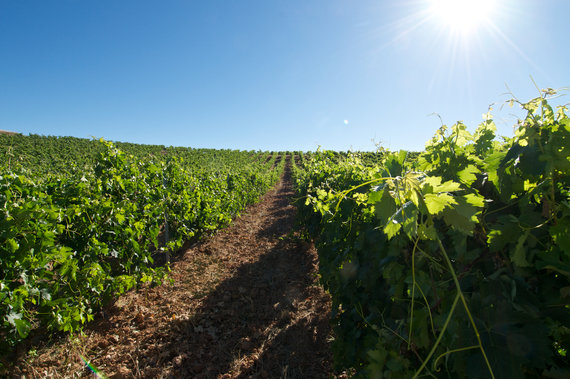CAMPAIGN BENEFITS
María del Yerro, owner of boutique winery Alonso del Yerro, working at the other end of the scale, believes firmly in the benefits of the US campaign. “While we are a small winery, working at the very top end of the market, we make an effort to participate in all the proposed activities as I believe they will reap benefits in the long term for the region.” She continues: “There is a good range of initiatives, from press trips to the region to larger tastings in the market, and as a result I think we can see a palpable change for the good in consumer attitudes towards Ribera del Duero’s wines.”
As far as Felix Solis Jnr is concerned, the region’s wines have an “excellent quality price ratio and they can be seen as an option to Rioja”. He continues: “With Ribera del Duero, you have a better wine with a similar price to Rioja, but the problem with Ribera del Duero in the main European markets is twofold – the name Ribera del Duero is difficult to pronounce and still does not enjoy a wide recognition, and the liquid needs to adapt more to international consumer tastes.”
He says: “Two weeks ago we put together a big tasting of the Ribera del Duero wines present in the UK market. Really there was only one out of 10 of the wines that was really adapted to the English consumer with a softer, more easy-to-drink style. This is something that Rioja has done very well and something that Ribera needs to do to progress successfully in these markets.”
The picture for Rueda is a little harder to define, according to campaign director for the regions in the US Felipe González-Gordon. “Rueda sales are not captured specifically by Spain’s customs, but in informal surveys and consultations we are seeing positive signs.” He adds: “However, not of the scope of Ribera, which has been active in the US with institutional campaigns for longer.”
While export figures are not available for Rueda, a quick look at the production shows that the amount of Verdejo now being harvested has soared in the past decade and a half, rising from 15,163,774 kilos in 2000 to 83,583,758 in 2014. The Verdejo varietal now represents more than 86% of the region’s total grape production, according to the CRDO Rueda, which makes it Spain’s white wine success story and an ideal partner for Ribera del Duero given their proximity and contrasting characteristics.
González-Gordon explains: “People do like Verdejo. We get positive feedback at most tastings. The challenge with Verdejo is that it is still an unknown variety for the general public, but image-wise it is doing fine, as the best-selling brands are from reputable producers who understand the US market and focus on quality.” Maybe the region is riding on the coat-tails of its big, red wine brother but if the trend continues and the US public continues to turn on to Ribera, success for Rueda should follow.
TRADE REACH
Working in such a large and complex market as the US is a challenge and González-Gordon admits that they have their “work cut out us for us in terms of trade reach”. He says: “There are more than 500,000 alcohol retail outlets in the US (both on and off-premise) along with many importers and distributors. We do tell our story in trade publications and advertise but our work needs to continue.”




